 Last additions - OSAKA 大阪府 Last additions - OSAKA 大阪府 |

Inside JR Hanwa Line train.Jan 02, 2019
|
|

JR Hanwa Line at JR Otori Station. 鳳駅Jan 02, 2019
|
|

JR Otori Station. 鳳駅Jan 02, 2019
|
|

Otori shopping arcade, but the shops were closed on New Year's Day.Jan 02, 2019
|
|

Otori shopping arcade.Jan 02, 2019
|
|

Manhole in Sakai, Osaka.Jan 02, 2019
|
|

Otori Danjiri Matsuri is held in Oct. Similar to the one in Kishiwada.Jan 02, 2019
|
|

Stay away from brick walls if the earth starts to shake.Jan 02, 2019
|
|

Torii for the back exit.Jan 02, 2019
|
|

Tree roots.Jan 02, 2019
|
|

Secondary shrine for Amaterasu Sun Goddess and Sugawara Michizane. 大鳥美波比神社Jan 02, 2019
|
|

The shrine suffered major damage from Typhoon No. 21 last Sept. Trees were damaged.Jan 02, 2019
|
|

Jan 02, 2019
|
|

Otori Taisha shrine suffered major damage from Typhoon No. 21 in Sept.2018. Part of the roof on the main shrine was damaged.Jan 02, 2019
|
|

You can walk around Otori Taisha's main shrine. Otori Taisha's architecture is called Otori-zukuri.Jan 02, 2019
|
|

OmikujiJan 02, 2019
|
|

New Year's arrows.Jan 02, 2019
|
|

Otori Taisha's ema prayer tablet for the white bird.Jan 02, 2019
|
|

This is Otori Taisha's regular-size ema prayer tablet for the Year of the Boar 2019.Jan 02, 2019
|
|

Next to Otori Taisha's Haiden hall was this jumbo ema prayer tablet for the Year of the Boar 2019. A white boar steadily walking up a hill toward its goal symbolized by the rising sun.Jan 02, 2019
|
|

Especially popular was the omikuji.Jan 02, 2019
|
|

Back of the Haiden hall.Jan 02, 2019
|
|

Patient people.Jan 02, 2019
|
|

No wonder it took so long to get to the shrine. The praying area is quite narrow.Jan 02, 2019
|
|

Offertor pit at Haiden worship hall on New Year's Day 2019.Jan 02, 2019
|
|

Otori Taisha shrine's Haiden worship hall on New Year's Day 2019, Sakai, Osaka. 拝殿Jan 02, 2019
|
|

Otori Taisha shrine's Haiden worship hall on New Year's Day 2019, Sakai, Osaka. 拝殿Jan 02, 2019
|
|

Otori Taisha shrine's Haiden worship hall on New Year's Day 2019, Sakai, Osaka. 拝殿Jan 02, 2019
|
|

Jan 02, 2019
|
|

And closer...Jan 02, 2019
|
|

Getting closer the shrine on the left.Jan 02, 2019
|
|

Wash basin, but hardly anyone used it. People didn't want to lose their place in line.Jan 02, 2019
|
|

I've noticed piles of trash at large Osaka shrines.Jan 02, 2019
|
|

This is a statue of Yamato Takeru (日本武尊) at Otori Taisha. He went around Japan and defeated his enemies until he finally met his demise on Mt. Ibuki in Shiga Prefecture where sought to kill an evil god. This god disguised himself as a white boar (another version says it was a serpent) who sprayed a poisonous mist that sickened Yamato Takeru.
He eventually died and when his body was cremated and buried in Kameyama in Mie Prefecture, his spirit rose from the ashes as a great white bird. This bird landed in a few places before finally landing here in Sakai, Osaka, where this Otori Shrine was built. "Otori" means "Big Bird" (not like Sesame Street, but more like a great swan or firebird).Jan 02, 2019
|
|

If you've never been to this shrine, it's impossible to tell how far or how near you are. The path makes a few turns.Jan 02, 2019
|
|

Standing still too often.Jan 02, 2019
|
|

Barrels of sake offered to the shrine.Jan 02, 2019
|
|

Much of the time we stood still. Didn't move much.Jan 02, 2019
|
|

The path to the shrine is quite narrow. It took a while to get to the shrine as we inched along.Jan 02, 2019
|
|

Suddenly the path to the shrine got crowded and later this line of people stopped movng. The first torii to Otori Taisha.Jan 02, 2019
|
|
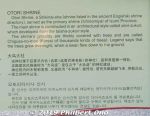
About Otori Taisha in English, Korean, and Chinese.Jan 02, 2019
|
|

Entrance to Otori Taisha on New Year's Day 2019.Jan 02, 2019
|
|

Otori Taisha (officially named "Otori Jinja") shrine is dedicated to Yamato Takeru (日本武尊), a very famous, legendary warrior prince. This is the headquarters shrine of all Otori shrines (大鳥神社) in Japan. Short walk from Otori Station (鳳駅) on the JR Hanwa Line that connects to Tennoji on the Osaka Loop Line.Jan 02, 2019
|
|

The shrine is in the small forest named "Chigusa-no-mori." Not very many people were here so I thought it would be quick and easy to see this shrine. But I was wrong.Jan 02, 2019
|
|

Sumiyoshi Taisha Station on the Nankai Line.Jan 02, 2019
|
|

Sumiyoshi Taisha Station on the Nankai Line.Jan 02, 2019
|
|

Sumiyoshi Taisha Station's Shop Nankai shopping arcade.Jan 02, 2019
|
|

Manhole in Sumiyoshi Ward, Osaka.Jan 02, 2019
|
|

The old and now -closed Sumiyoshi Koen Station for the tram.Jan 02, 2019
|
|

Hankai Line tram at Sumiyoshi Torii-mae stop in front of Sumiyoshi Taisha. 阪堺線 住吉鳥居前停留場Jan 02, 2019
|
|

Hankai Line tram at Sumiyoshi Torii-mae stop in front of Sumiyoshi Taisha. 阪堺線 住吉鳥居前停留場Jan 02, 2019
|
|

Sumiyoshi Park is across the train tracks from Sumiyoshi Taisha. Big park. 住吉公園Jan 02, 2019
|
|

Food stalls on the way out.Jan 02, 2019
|
|

Ama-zake was good too.Jan 02, 2019
|
|

Jan 02, 2019
|
|

Free serving of hot ginger tea. That was good. Clears your nasal passages.Jan 02, 2019
|
|

Grand tree at Sumiyoshi Taisha, Osaka.Jan 02, 2019
|
|

Grand tree at Sumiyoshi Taisha, Osaka.Jan 02, 2019
|
|

Decorative paddles with a cat.Jan 02, 2019
|
|

Cat rice paddles.Jan 02, 2019
|
|

Small cat figurines for sale.Jan 02, 2019
|
|

About Hattatsu worship. 住吉大社 初辰まいりJan 02, 2019
|
|

About Hattatsu worship. 住吉大社 初辰まいりJan 02, 2019
|
|

Larger beckoning cat figurines at Nankun-sha cat shrine at Sumiyoshi Taisha.Jan 02, 2019
|
|

Tiny beckoning cat figurines at Nankun-sha cat shrine at Sumiyoshi Taisha.Jan 02, 2019
|
|

They have tiny, medium, and large cat statues that you can collect.Jan 02, 2019
|
|

Nankun-sha cat shrine altar (楠珺社). It promotes "Hattatsu" worship. At Sumiyoshi Taisha, Osaka. 初辰まいりYou supposed to come here and worship monthly and collect a total of 48 cat figurines over a period of 24 years. Then you'll get the jackpot of family safety and business prosperity. It's based on a play of words with "48" (shijuhachi) that can be pronounced similarly to "shiju-hattatsu (始終発達) which means "constant advancement or development."Jan 02, 2019
|
|

Inside Nankun-sha cat shrine (楠珺社). Jan 02, 2019
|
|

Nankun-sha cat shrine (楠珺社). Jan 02, 2019
|
|

Nankun-sha cat shrine (楠珺社). Jan 02, 2019
|
|

Banners for the Nankun-sha cat shrine (楠珺社). It's behind Hongu No. 1.Jan 02, 2019
|
|

Small shrine for a great tree.Jan 02, 2019
|
|

New Year's souvenir arrows.Jan 02, 2019
|
|

Rear of Wakamiya Hachimangu.Jan 02, 2019
|
|

Wakamiya Hachimangu Shrine, a secondary shrine of Sumiyoshi Taisha. Worships Hachiman (Emperor Ojin), the guardian deity of the samurai. 若宮八幡宮Hachiman (Emperor Ojin) was the son of Empress Jingu.Jan 02, 2019
|
|

Wakamiya Hachimangu Shrine, a secondary shrine of Sumiyoshi Taisha. The torii is unusual with the middle beam not sticking out the sides. 若宮八幡宮Jan 02, 2019
|
|

Regular ema prayer tablet with Sorihashi Bridge. ¥800 絵馬Jan 02, 2019
|
|

Sumiyoshi Taisha's ema prayer tablet for 2019, Year of the Boar. ¥1000 絵馬Jan 02, 2019
|
|

Hongu No. 4 shrine.Jan 02, 2019
|
|

Hongu No. 3 shrine offertory pit.Jan 02, 2019
|
|

Hongu No. 3 shrine in front of the altar protected by netting.Jan 02, 2019
|
|

Rear view of Hongu No. 3 shrine.Jan 02, 2019
|
|

Rear view of Hongu No. 3 and No. 4 shrines. Sumiyoshi-zukuri architectureJan 02, 2019
|
|

Side view of Hongu No. 3.Jan 02, 2019
|
|

Sumiyoshi Taisha Hongu No. 3 and No. 4 shrines. Both are National Treasures. Hongu No. 4 worships Jingu Kogo (Empress Jingu 神功皇后).(第三本宮・第四本宮)Jan 02, 2019
|
|

Sumiyoshi Taisha Hongu No. 3 shrine, National Treasure. Worships Uwatsutsu no Onomikoto (表筒男命). (第三本宮)Jan 02, 2019
|
|

Hongu No. 3 shrine. (第三本宮)Jan 02, 2019
|
|

Hongu No. 4 shrine and Hongu No. 2 shrine.Jan 02, 2019
|
|

Hongu No. 2 shrine fence.Jan 02, 2019
|
|

Hongu No. 2 shrine. The Sumiyoshi-zukuri architecture has decorative ridgepoles.Jan 02, 2019
|
|

Back of No. 2 Hongu shrine. Striking contrast with the dark brown, front part of the shrine. (第二本宮)Jan 02, 2019
|
|

Hongu No. 2 shrine offertory pit. A happy time for Shinto shrines. (第二本宮)Jan 02, 2019
|
|

Hongu No. 2 shrine offertory pit. (第二本宮)Jan 02, 2019
|
|

Hongu No. 2 shrine with netting to protect the altar from flyimg coins. (第二本宮)Jan 02, 2019
|
|

Hongu No. 2 shrine. (第二本宮)Jan 02, 2019
|
|

Sumiyoshi Taisha Hongu No. 2 shrine, National Treasure. Worships Nakatsutsu no Onomikoto (中筒男命). (第二本宮)Jan 02, 2019
|
|

Omikuji paper fortunes on New Year's Day.Jan 02, 2019
|
|

People going to Hongu No. 1 shrine. Security staff direct and watch the crowd.Jan 02, 2019
|
|

People going to Hongu No. 1 shrine (left). In the distance is the back of Hongu No. 2 shrine.Jan 02, 2019
|
|

Hongu No. 1 shrine offertory pit.Jan 02, 2019
|
|

Hongu No. 1 shrine offertory pit.Jan 02, 2019
|
|

In front of Hongu No. 1 shrine, shielded with plastic so the coins don't hit the altar or people inside.Jan 02, 2019
|
|

Sumiyoshi Taisha's Hongu No. 1 shrine, a National Treasure. Osaka city. Worships Sokotsutsu no Onomikoto (底筒男命).Jan 02, 2019
|
|

Go left through that gate to exit and to see the "cat shrine."Jan 02, 2019
|
|

Sumiyoshi Taisha is the headquarters shrine of all Sumiyoshi shrines in Japan, about 600 of them. Most are in central and western Japan.Jan 02, 2019
|
|

Crowd going to Hongu No. 1. You supposed to pray at Hongu No. 1 first, then you can pray at the other Hongu and secondary shrines. Jan 02, 2019
|
|

Hongu No. 1, No. 2, and No. 3 shrines worship a trio of gods called Sumiyoshi Okami (住吉大神). They are gods of the sea, waka poetry, agriculture and industries, traditional archery, and even sumo wrestling.Jan 02, 2019
|
|

Crowd going to Hongu No. 1. Jan 02, 2019
|
|

Sumiyoshi Taisha's main shrine consists of four shrines named Hongu No. 1, 2, 3, and 4 (本宮). Each Hongu is dedicated to a different deity and all four Hongu shrines are National Treasures. First you see Hongu No. 3 and 4 here. Jan 02, 2019
|
|

Enter the shrine through the torii and gate ahead.Jan 02, 2019
|
|

Enter the shrine through the torii and gate ahead.Jan 02, 2019
|
|

Sorihashi Bridge (反橋) is a symbol of the shrine and one of the larger taikobashi.Jan 02, 2019
|
|

On Sorihashi Bridge (反橋).Jan 02, 2019
|
|

It has graduated steps.Jan 02, 2019
|
|

Going up the shrine's arch bridge called Sorihashi (反橋).Jan 02, 2019
|
|

Going up the shrine's taikobashi arch bridge called Sorihashi (反橋).Jan 02, 2019
|
|

Jan 02, 2019
|
|

Pass through the first torii, then the taikobashi bridge.Jan 02, 2019
|
|

One bottleneck was here, the tram line crossing. The crowd had to stop here whenever a tram passed through. The shrine is straight ahead.Jan 02, 2019
|
|

It looks very crowded at Sumiyoshi Taisha, but it progressed quickly. Kept on walking most of the time.Jan 02, 2019
|
|

Jan 02, 2019
|
|

Going through the Shop Nankai shopping arcade connected to the train station's exit.Jan 02, 2019
|
|

From the train station platform before noon, we could see the crowd heading to the shrine. This crowd became less in the afternoon.Jan 02, 2019
|
|

Sumiyoshi Taisha is one of Japan's three most popular shrines during New Year's (Jan. 1 to 3) seeing over 2 million worshippers. The main shrines are National Treasures since they are built in the unique Sumiyoshi-zukuri style. Nicknamed "Sumiyossan" by locals, Sumiyoshi Taisha is the headquarters shrine of all Sumiyoshi shrines in Japan, about 600 of them. Most are in central and western Japan. The shrine is a short walk from Sumiyoshi Taisha Station on the Nankai Line and Hankai Line tram station. These photos were taken on New Year's Day, Jan. 1, 2019, Year of the Boar. Jan 02, 2019
|
|
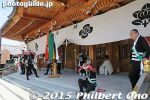
Sep 22, 2016
|
|
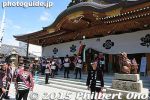
Kishiki Shrine's priest conducts a prayer for each float.Sep 22, 2016
|
|
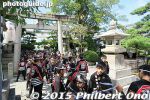
The float pullers enter the shrine grounds for a short prayer.Sep 22, 2016
|
|
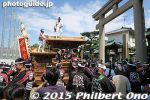
Sep 22, 2016
|
|
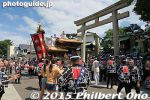
Sep 22, 2016
|
|
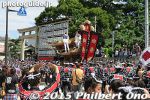
Sep 22, 2016
|
|
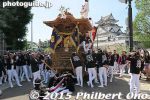
Sep 22, 2016
|
|

Sep 22, 2016
|
|
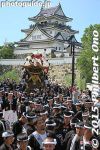
Sep 22, 2016
|
|
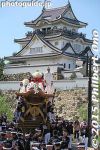
Sep 22, 2016
|
|
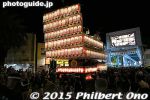
Sep 22, 2016
|
|
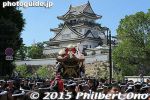
Sep 22, 2016
|
|
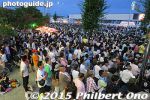
Sep 22, 2016
|
|
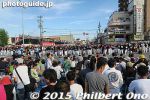
Sep 22, 2016
|
|
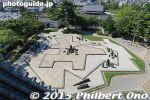
Sep 22, 2016
|
|
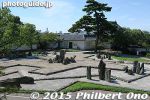
There is a rock garden in front.Sep 22, 2016
|
|
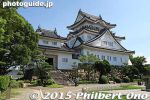
Kishiwada Castle tower (donjon). Sep 22, 2016
|
|
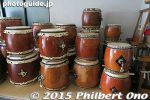
Sep 17, 2016
|
|
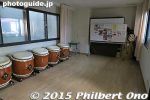
Sep 17, 2016
|
|
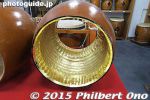
The inside of the taiko drums is covered with gold leaf for better sound.Sep 17, 2016
|
|
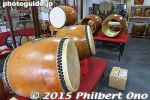
Sep 17, 2016
|
|
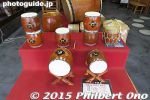
Sep 17, 2016
|
|
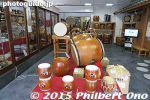
Sep 17, 2016
|
|
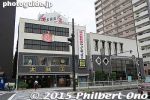
Large taiko shop (TaikoMasa) near Ashiharabashi Station on the Loop Line. This area has a number of taiko shops. Their quality taiko drums are made of zelkova wood (keyaki). They also make the taiko drums used in the Kishiwada Danjiri Matsuri.Sep 17, 2016
|
|
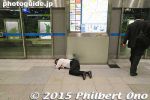
Drunken man inside Shin-Osaka Station.Sep 17, 2016
|
|

Bunraku puppet displayed inside Shin-Osaka Station.Sep 17, 2016
|
|
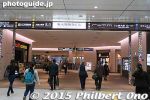
Sep 17, 2016
|
|
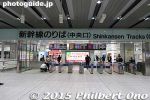
Shin-Osaka Station's shinkansen turnstile.Sep 17, 2016
|
|
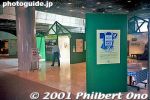
Bento to Mixed Plate exhibition in 2001 at National Museum of Ethnology, Osaka.Sep 17, 2016
|
|

Osaka subways are more international than in Tokyo. This destination sign is displayed in Japanese, English, Chinese, and Korean. In Tokyo, we only see Japanese and English.Sep 17, 2016
|
|
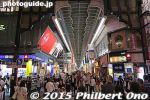
Sep 17, 2016
|
|
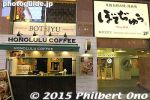
Honolulu Coffee in Dotonbori, OsakaSep 17, 2016
|
|
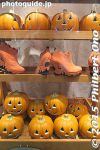
HalloweenSep 17, 2016
|
|
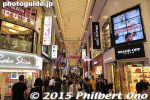
Sep 17, 2016
|
|
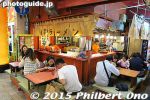
Sep 17, 2016
|
|
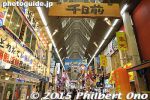
Lots of indoor shopping arcades.Sep 17, 2016
|
|

Besides neon signs, shops, restaurants, and boardwalks, there are boat cruises along the canal in Dotonbori.Sep 17, 2016
|
|
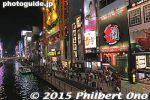
Sep 17, 2016
|
|
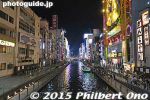
Sep 17, 2016
|
|
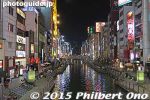
Lots of tourists. Dotonbori is quite a spectacle at night.Sep 17, 2016
|
|
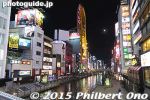
Boardwalks along the canal.Sep 17, 2016
|
|

Sep 17, 2016
|
|
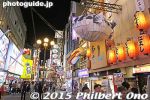
Sep 17, 2016
|
|
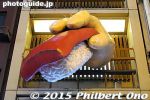
SushiSep 17, 2016
|
|
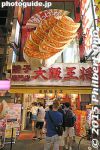
Sep 17, 2016
|
|
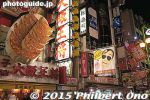
Sep 17, 2016
|
|
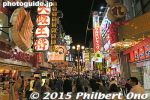
Gyoza restaurant in this retro area.Sep 17, 2016
|
|
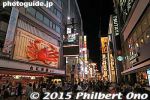
Restaurant row is fun too. Crab restaurant Kani Dōraku's crab sign has been here since 1960.Sep 17, 2016
|
|
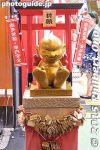
Sep 17, 2016
|
|
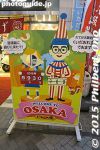
Sep 17, 2016
|
|
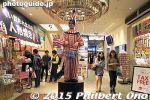
So this clown was moved here, not far from its original location.Sep 17, 2016
|
|
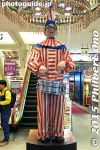
Another Dotonbori icon is Kuidaore Taro, a mechanical drum-playing clown that used to be the mascot of a restaurant that has since closed.Sep 17, 2016
|
|
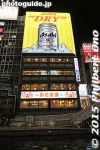
Lots of neon signs, like Ginza in Tokyo.Sep 17, 2016
|
|
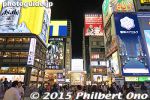
Sep 17, 2016
|
|
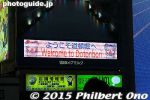
Welcome to Dotonbori!Sep 17, 2016
|
|
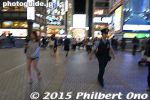
Ebisubashi Bridge or the "pick-up" bridge. However, it is regularly patrolled by police to prevent solicitations.Sep 17, 2016
|
|
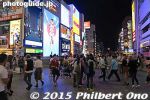
Sep 17, 2016
|
|
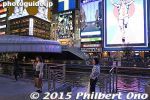
Sep 17, 2016
|
|
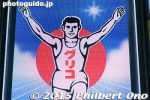
Glico Man at Dotonbori.Sep 17, 2016
|
|
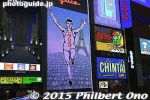
Eiffel Tower and Glico Man.Sep 17, 2016
|
|
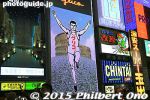
Rome's Colosseum and Glico Man.Sep 17, 2016
|
|
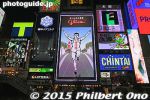
Interesting to watch how the background changes. Sep 17, 2016
|
|
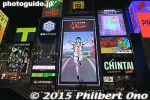
The Glico Man is also very famous in Asia, with many Asian tourists posing with it.Sep 17, 2016
|
|
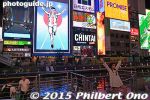
The Glico Man sign uses LED now. The tourists mimic the Glico Man's pose. The area is regularly patrolled by the police so it's less sleazy than before.Sep 17, 2016
|
|
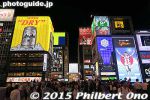
Dotonbori is Osaka's most famous evening entertainment district with neon lights, shops, restaurants, riverside boardwalks, boat rides, and big-city hustle and bustle.Sep 17, 2016
|
|

My video of Kishiwada Danjiri Matsuri Festival shot in the Haruki area near Haruki Station on Sept. 20, 2009 in Kishiwada, Osaka.Aug 22, 2014
|
|

My video of Kishiwada Danjiri Matsuri Festival, around Nankai Kishiwada Station in Kishiwada, Osaka. Footage shot mainly near Kishiwada Castle.Aug 22, 2014
|
|
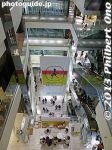
The Grand Front Osaka complex next to Osaka Station opened in April 2013.Apr 14, 2014
|
|
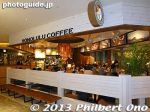
Inside Grand Front Osaka, this coffee shop from Hawaii (serving Kona coffee) with a long line of people waiting to get in. We couldn't wait and reluctantly went to Starbucks instead.Apr 14, 2014
|
|
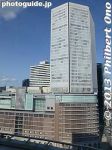
Apr 14, 2014
|
|
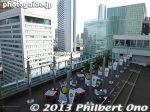
Apr 14, 2014
|
|
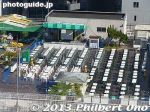
Apr 14, 2014
|
|
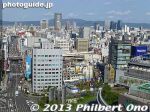
Apr 14, 2014
|
|
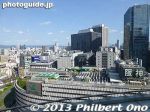
Apr 14, 2014
|
|

Apr 14, 2014
|
|
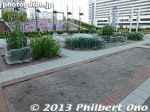
Apr 14, 2014
|
|
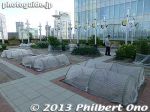
Rooftop garden for rent.Apr 14, 2014
|
|
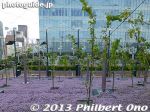
Apr 14, 2014
|
|
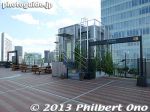
Apr 14, 2014
|
|
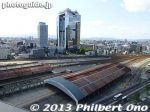
Apr 14, 2014
|
|
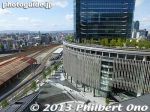
Apr 14, 2014
|
|
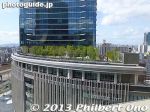
Apr 14, 2014
|
|

Apr 14, 2014
|
|
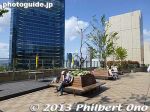
Apr 14, 2014
|
|
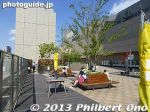
The new station buildings also have pleasant rooftop parks with a view.Apr 14, 2014
|
|
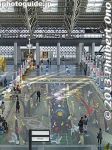
Apr 14, 2014
|
|
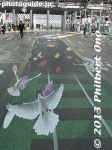
Apr 14, 2014
|
|
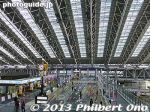
JR Osaka StationApr 14, 2014
|
|
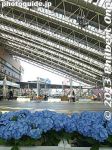
Apr 14, 2014
|
|
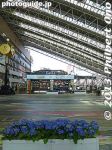
There are great spots to just sit or meet up with a friend. Apr 14, 2014
|
|
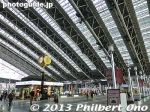
Apr 14, 2014
|
|
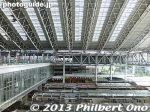
Apr 14, 2014
|
|
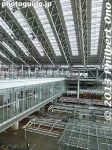
Apr 14, 2014
|
|
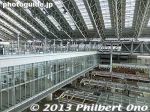
Apr 14, 2014
|
|
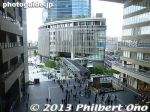
Apr 14, 2014
|
|
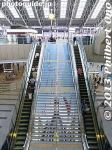
Apr 14, 2014
|
|
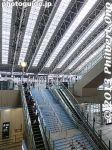
Apr 14, 2014
|
|
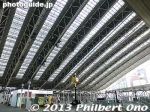
Apr 14, 2014
|
|
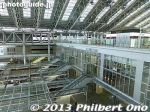
Apr 14, 2014
|
|
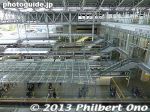
Apr 14, 2014
|
|
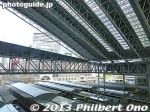
Apr 14, 2014
|
|
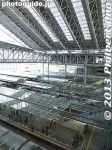
Apr 14, 2014
|
|
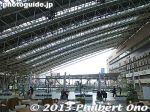
Apr 14, 2014
|
|
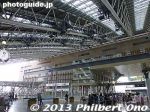
Apr 14, 2014
|
|
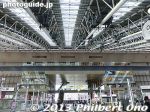
Apr 14, 2014
|
|
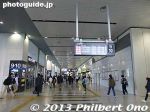
Apr 14, 2014
|
|
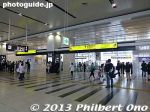
Apr 14, 2014
|
|
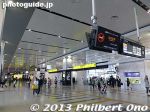
Inside Osaka Station.Apr 14, 2014
|
|
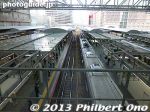
The pedestrian bridge above the train tracks gives a bird's-eye view of all or most of the tracks. I could never figure out Osaka Station until now.Apr 14, 2014
|
|
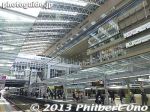
JR Osaka Station's new terminal building opened on May 4, 2011. Great improvement. It has a simple lean-to roof that creates some space to build bridges and plazas above the train tracks.Very easy to get your bearings and remember which way to go wherever you wanna go. Apr 14, 2014
|
|
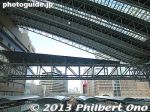
Apr 14, 2014
|
|
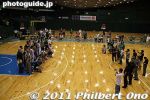
Hawaii spent only one night in Japan. They didn't see much here. Hope they spend more time in Japan next time.Aug 25, 2011
|
|
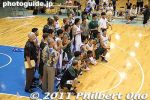
Group photo. Too bad they didn't face the crowd.Aug 25, 2011
|
|

I wish they at least said "Aloha" to the crowd. After all, they came all the way from Hawaii for the first time.Aug 25, 2011
|
|
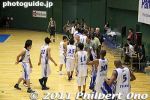
Aug 25, 2011
|
|

Aug 25, 2011
|
|

My best shot of the day. Joston Thomas.Aug 25, 2011
|
|

Joston ThomasAug 25, 2011
|
|

Dominick BrumfieldAug 25, 2011
|
|

Dominick BrumfieldAug 25, 2011
|
|

Aug 25, 2011
|
|
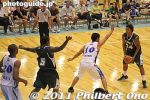
Aug 25, 2011
|
|
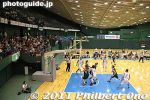
Aug 25, 2011
|
|
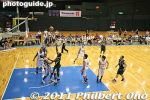
Aug 25, 2011
|
|
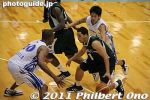
Aug 25, 2011
|
|
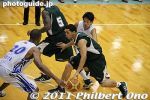
Aug 25, 2011
|
|
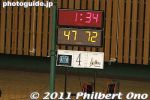
Aug 25, 2011
|
|

Pi`i MinnsAug 25, 2011
|
|
| 794 files on 4 page(s) |
1 |
 |
|